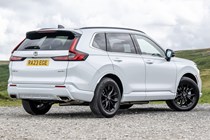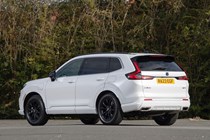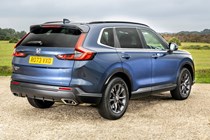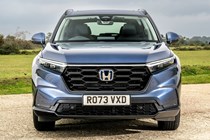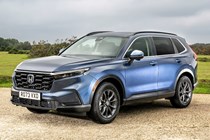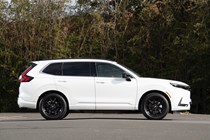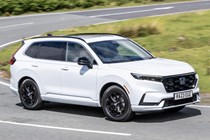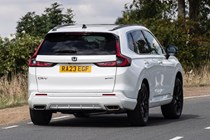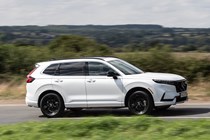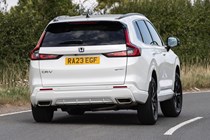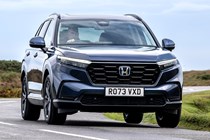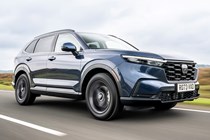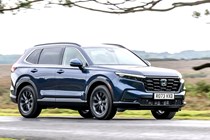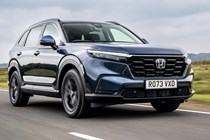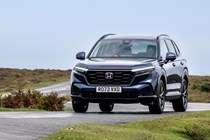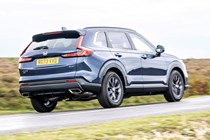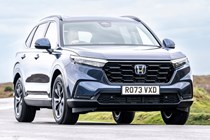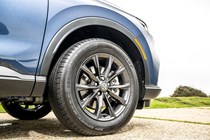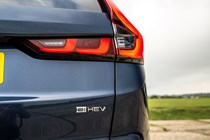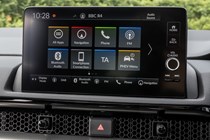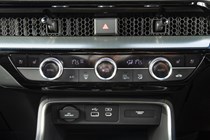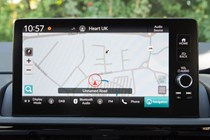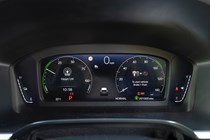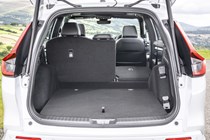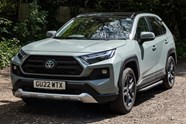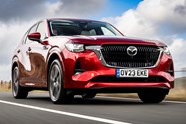
Honda CR-V review
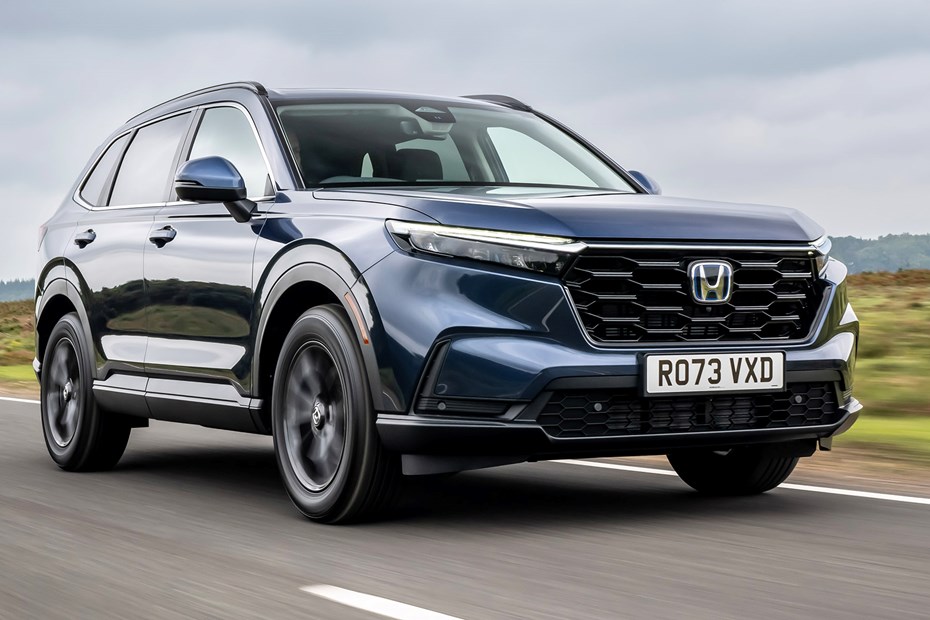
At a glance
| Price new | £45,220 - £49,720 |
|---|---|
| Used prices | £28,169 - £40,480 |
| Road tax cost | £620 |
| Insurance group | 34 - 37 |
Get an insurance quote with

|
|
| Fuel economy | 42.8 mpg |
| Miles per pound | 6.3 |
| Number of doors | 5 |
| View full specs for a specific version | |
Available fuel types
Hybrid
Pros & cons
- Smooth hybrid powertrains
- Excellent fuel efficiency
- Well designed, spacious interior
- There are cheaper rivals
- There are faster rivals
- Not especially exciting
Honda CR-V SUV rivals
Overview
The Honda CR-V is one of the most established and best SUV names in the business. The original model, a small 4x4 aimed at lifestyle buyers rather than off-road enthusiasts, launched all the way back in 1995, predating the trend for easy to drive crossovers typified by the arrival of the Nissan Qashqai in 2007. This sixth-generation CR-V was introduced in 2023 and is one of the most family friendly SUVs you can currently buy.
However, thanks in part to Honda’s decision to only use hybrid powertrains, the CR-V is also one of the pricier choices in this area of the market. There are no low cost petrol or diesel versions here as there are with many rivals. Instead you can only pick between a selection of self-charging hybrid models badged e:HEV starting at around £46,000 or a range-topping plug-in hybrid variant labelled e:PHEV priced from just under £54,000.
They both use essentially the same petrol engine and electric motor technology, but the CR-V e:PHEV has a much larger drive battery, allowing it to cover up to 50 miles on electric power.
The price issue alone will knock the CR-V off the shopping list for many buyers. While several of the obvious family SUV champions, such as the Skoda Karoq, Kia Sportage and VW Tiguan are slightly smaller than the Honda, you can also get impressive larger vehicles such as the latest Skoda Kodiaq for less money, too. What’s more, the CR-V is only a five-seater vehicle; the Kodiaq gives you the flexibility to carry seven.
The most direct alternative is the Toyota RAV4. This is a considerably older model but also comes with self-charging and plug-in hybrid power from a Japanese manufacturer. If the eco-friendliness of electrification appeals, you could also consider the 2025 Parkers Car of The Year, the all-electric Renault Scenic E-Tech – or if that’s not big enough, the Kia EV6.
As well as fuel efficiency and space – which the CR-V has plenty of – the user-friendliness of the Honda’s interior design will also help attract buyers. There are still plenty of physical buttons inside this car, while the firm’s reputation for mechanical reliability remains legendary. The driving experience is also very neat and tidy, if not overly exciting.
Three trims are currently available: Elegance, Advance and Advance Tech. The former two come as self-charging hybrids while Advance Tech is reserved for the plug-in. If you want four-wheel drive, it’s standard on the regular hybrids but not available on the e:PHEV.
All models come extremely well-equipped, including a panoramic glass roof, LED lights, all-round parking sensors, a wireless charger, heated front seats, keyless entry, powered tailgate and Honda’s most sophisticated Sensing 360 suite of safety aids. Advance models add automatic main beam headlights, heated steering wheel and 360-degree parking cameras among other items, while the range-topping Advance Tech model gains front seat cooling, a head-up display and Honda Parking Pilot.
As well as short-term road testing, we’ve also spent several months with a CR-V plug-in hybrid, using it as family transport; you can read more about that on our Honda CR-V long-term test page. Information about how we test cars is also published on this website.
Over the next few pages we’ll be thoroughly reviewing all aspects of the Honda CR-V and rating them in our verdict. Our scores will take into account the driving experience, how pleasant the interior is, the practicality on offer and what it’ll cost you to run.




